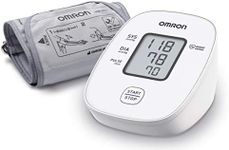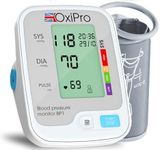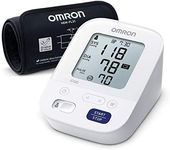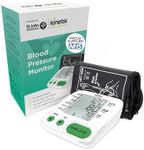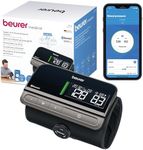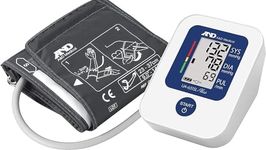Buying Guide for the Best Blood Pressure Monitors
Choosing the right blood pressure monitor is crucial for managing your health effectively. Blood pressure monitors come in various types and with different features, so it's important to understand what each specification means and how it can benefit you. This guide will help you navigate through the key specifications to consider when selecting a blood pressure monitor that best fits your needs.Type of MonitorBlood pressure monitors come in two main types: upper arm and wrist. Upper arm monitors are generally considered more accurate and are recommended by most health professionals. Wrist monitors can be more convenient and portable but may require more precise positioning to get accurate readings. If you need a monitor for home use and want the most reliable readings, an upper arm monitor is likely the best choice. If you need something more portable and are willing to take extra care in positioning, a wrist monitor could be suitable.
Cuff SizeThe cuff size is important because an improperly fitting cuff can give inaccurate readings. Cuffs come in various sizes, typically small, medium, and large. Measure the circumference of your upper arm or wrist to determine the correct size. A cuff that is too tight or too loose will not provide accurate measurements, so it's crucial to choose one that fits well. If multiple people will be using the monitor, look for models with adjustable or multiple cuffs.
AccuracyAccuracy is the most critical feature of a blood pressure monitor. Look for monitors that are clinically validated, meaning they have been tested and approved for accuracy by medical organizations. This information is usually available in the product description or packaging. Accurate readings are essential for effective health management, so prioritize monitors with a strong reputation for reliability.
Ease of UseEase of use includes how simple the monitor is to set up, operate, and read. Look for monitors with clear, easy-to-read displays and straightforward instructions. Some monitors come with features like voice guidance, large buttons, and one-touch operation, which can be particularly helpful for older adults or those with limited dexterity. Consider your comfort level with technology and choose a monitor that you can use confidently.
Memory and Data StorageMany blood pressure monitors come with memory functions that store previous readings. This feature is useful for tracking your blood pressure over time without needing to write down each reading manually. Some monitors store data for multiple users, which is beneficial for households with more than one person monitoring their blood pressure. Consider how much data storage you need and whether you want the ability to track trends over time.
ConnectivitySome modern blood pressure monitors offer connectivity features such as Bluetooth or Wi-Fi, allowing you to sync your readings with a smartphone app or computer. This can make it easier to share your data with healthcare providers and keep a detailed record of your blood pressure history. If you are tech-savvy and like the idea of having digital records, a monitor with connectivity features might be a good fit for you.
Power SourceBlood pressure monitors can be powered by batteries, an AC adapter, or both. Battery-operated monitors offer portability and convenience, especially if you travel frequently. Monitors with an AC adapter can be more economical in the long run, as you won't need to replace batteries. Consider your lifestyle and choose a power source that aligns with your needs. Some monitors offer both options, providing flexibility.
Additional FeaturesAdditional features can enhance the functionality of a blood pressure monitor. These may include irregular heartbeat detection, averaging multiple readings, or providing health tips. While these features are not essential, they can provide added value and convenience. Think about which additional features might be beneficial for you and choose a monitor that offers those extras.
